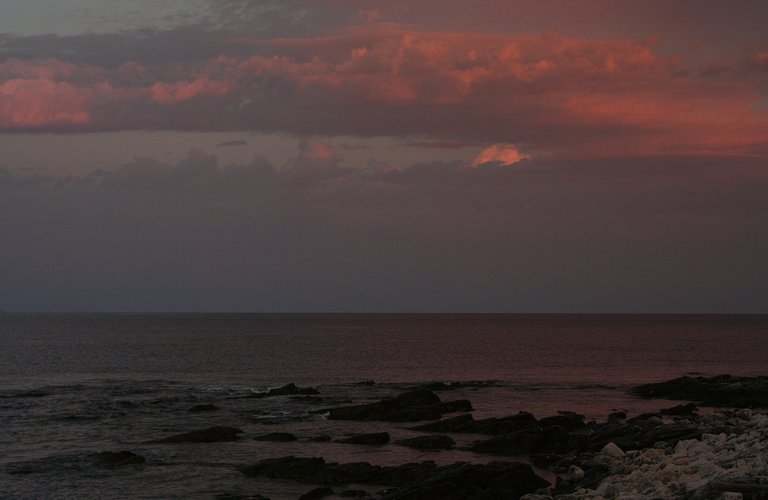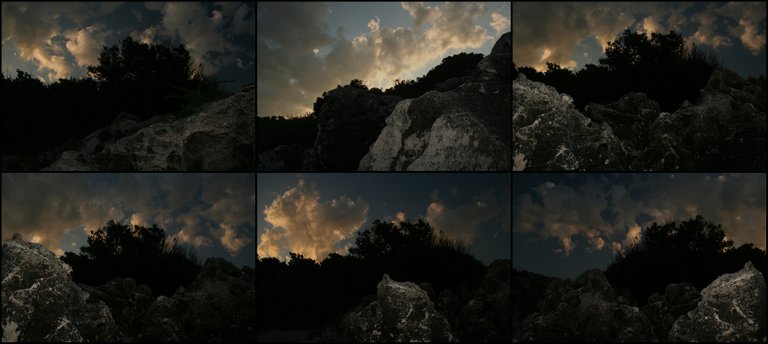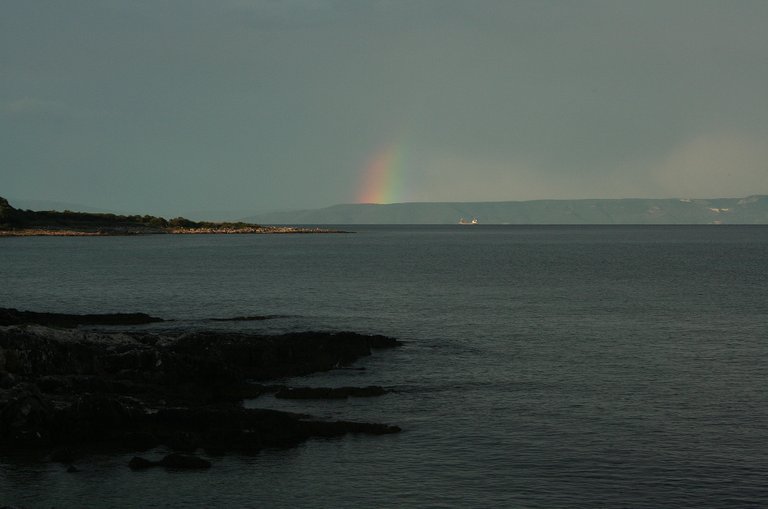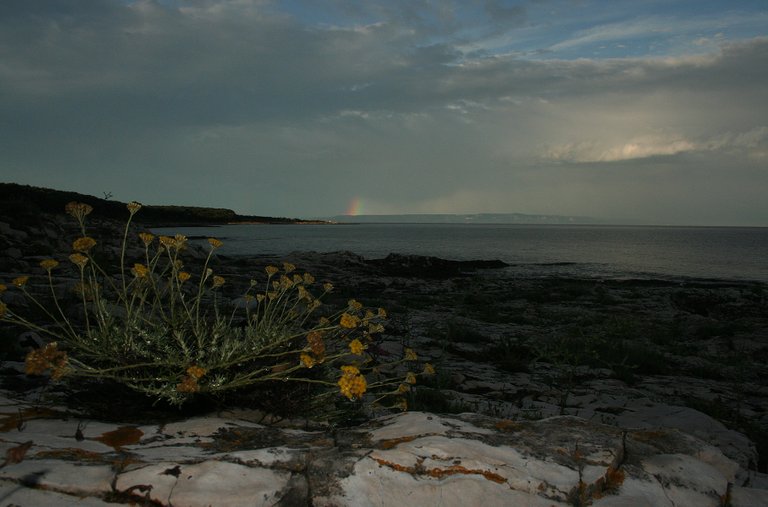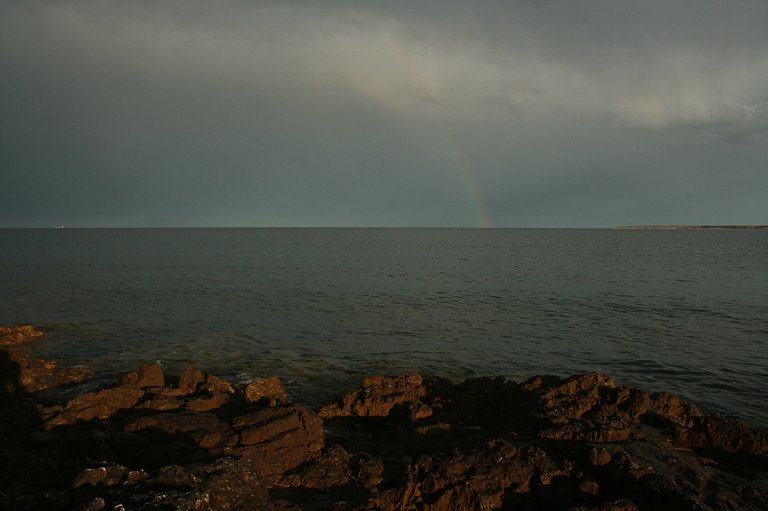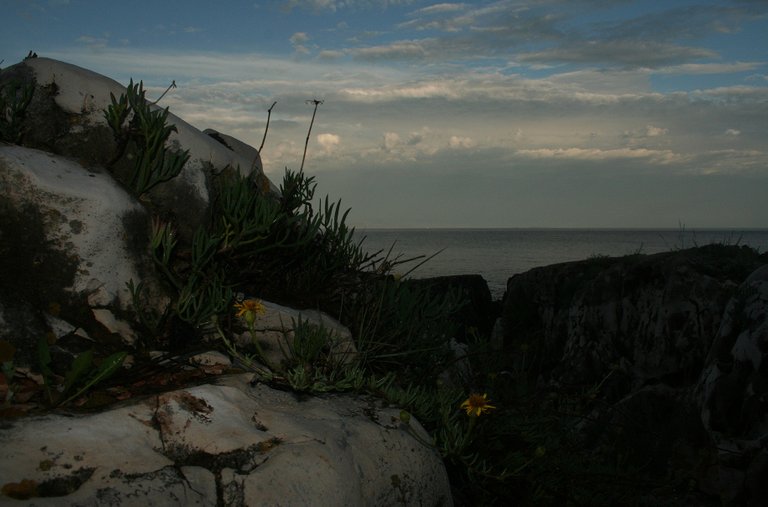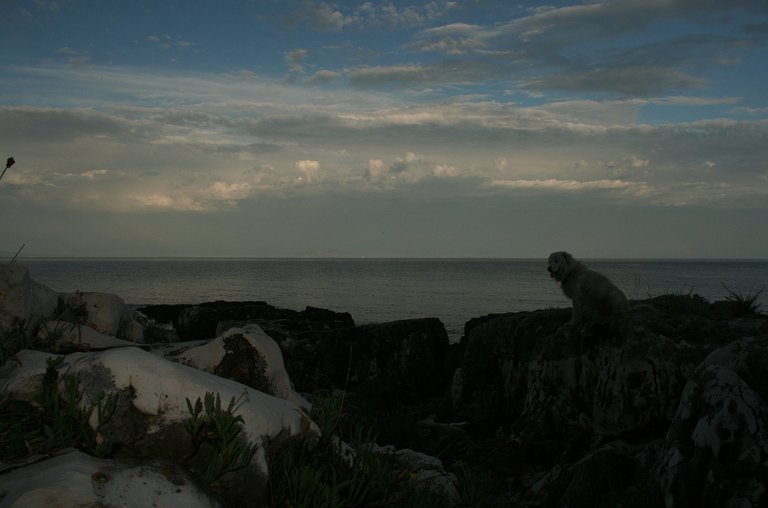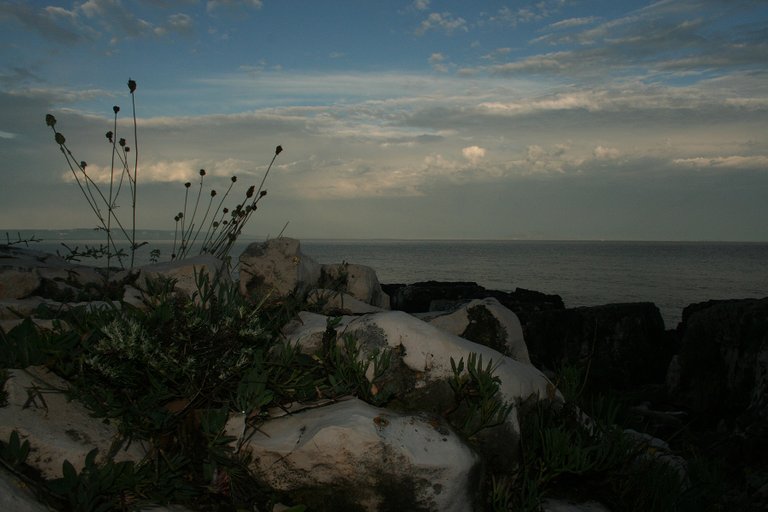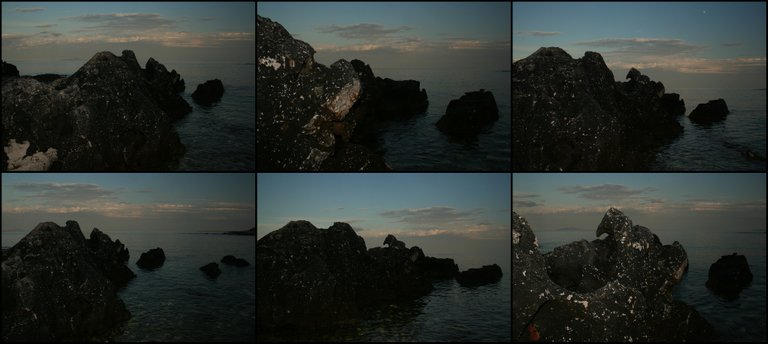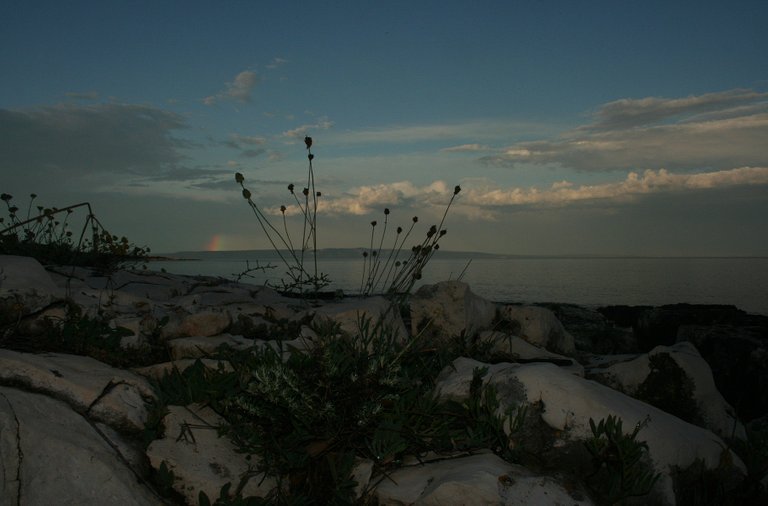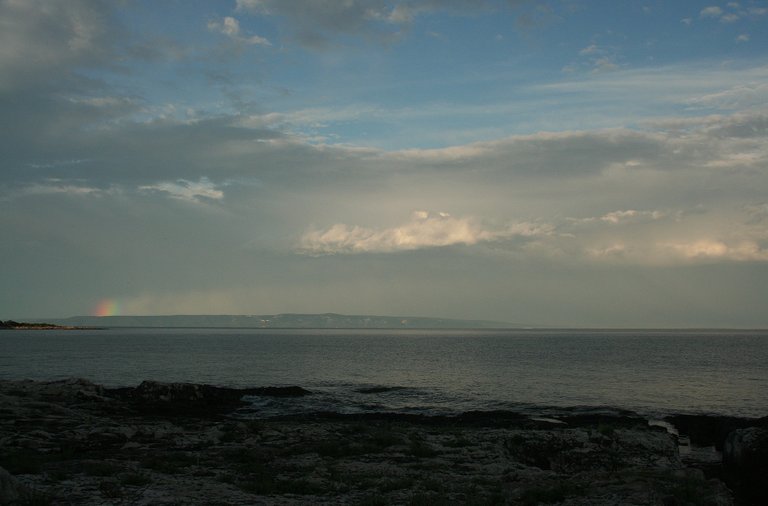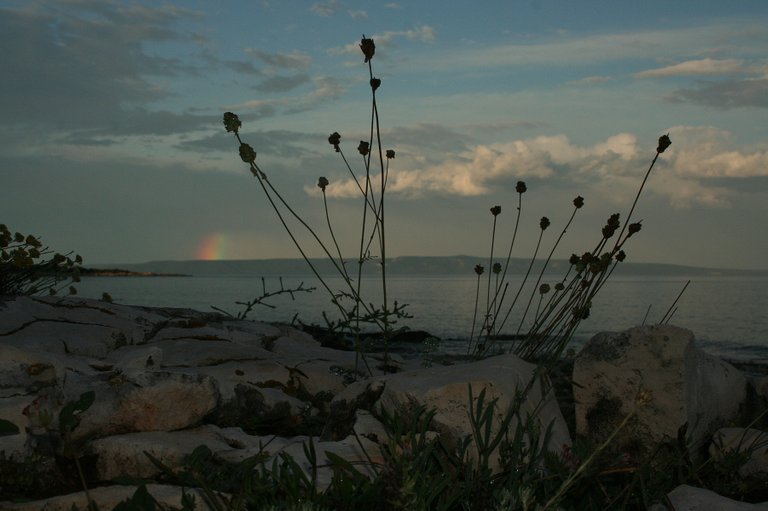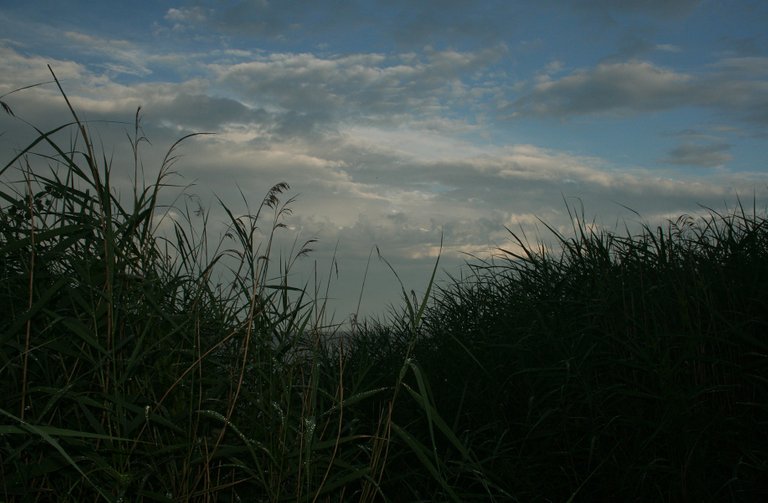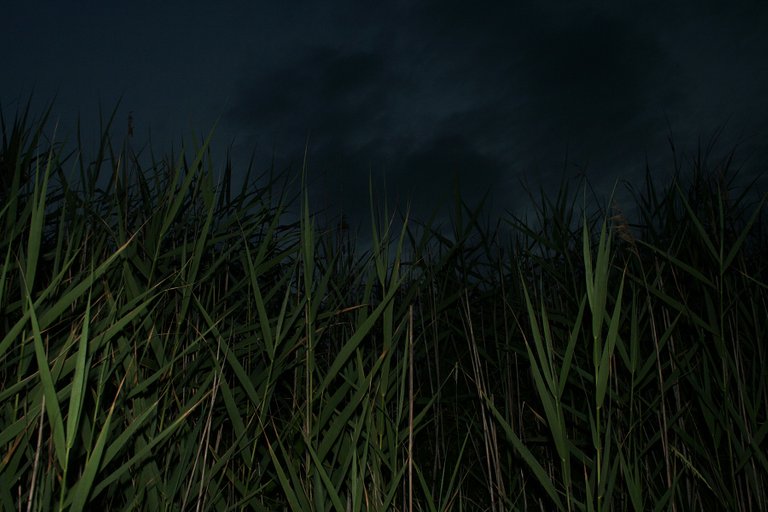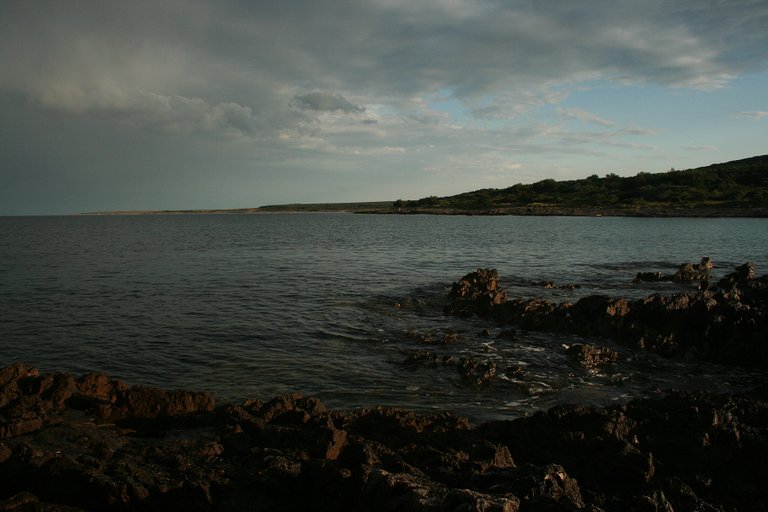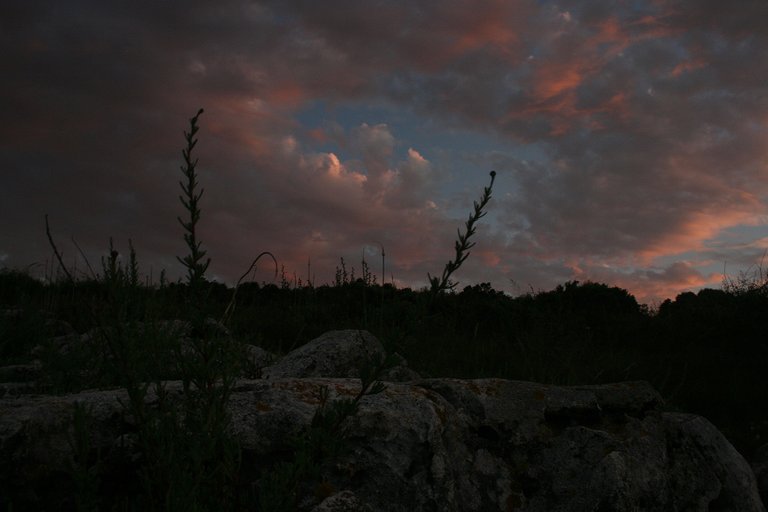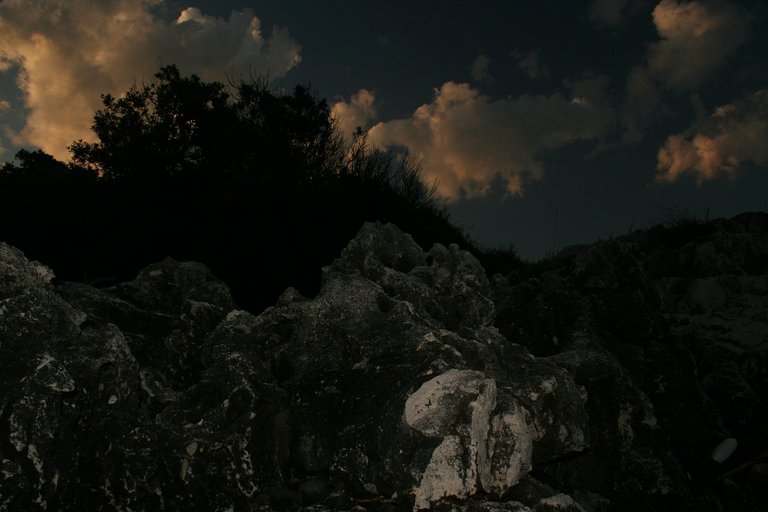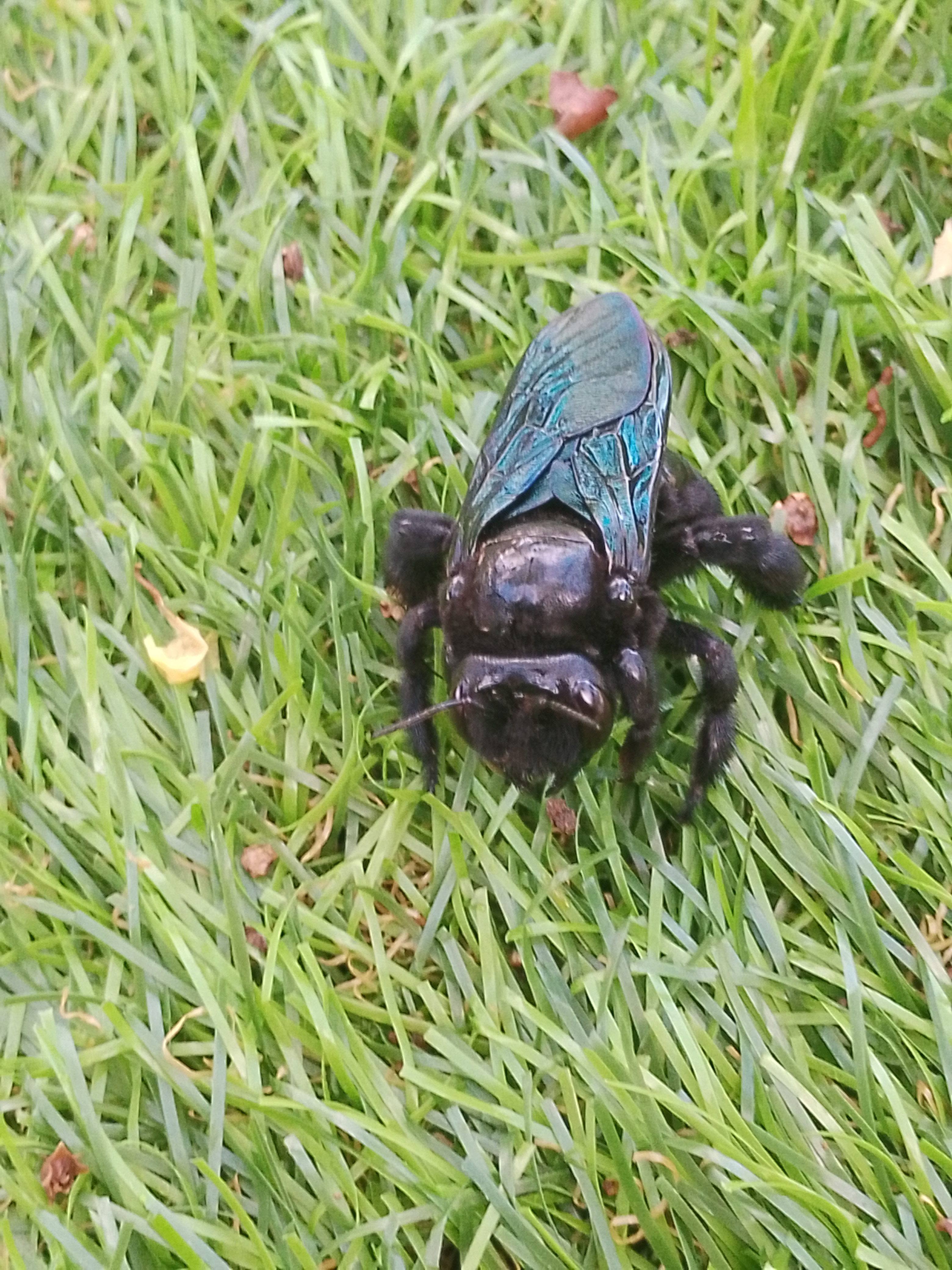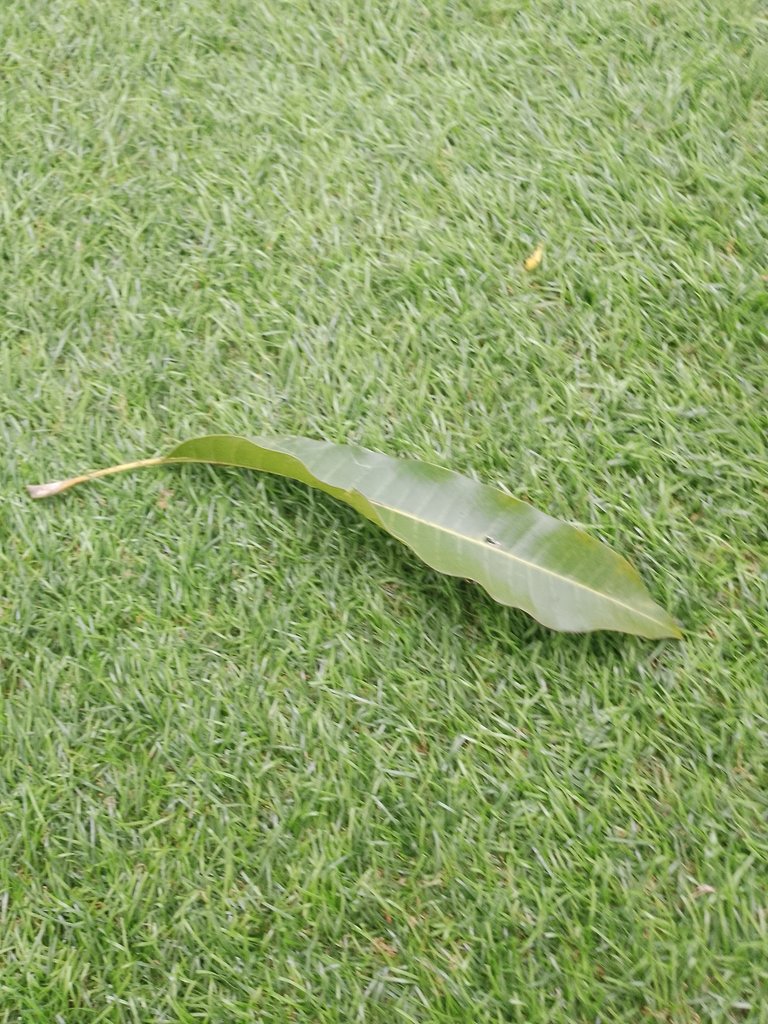In today's post, I'll show you the scenery on one of my favorite stretches of coastline in the area around my hometown.
The place isn't far from the village of Shishan, only four or five kilometers, and I have to drive about ten kilometers from Medulin, the small seaside town where I live.
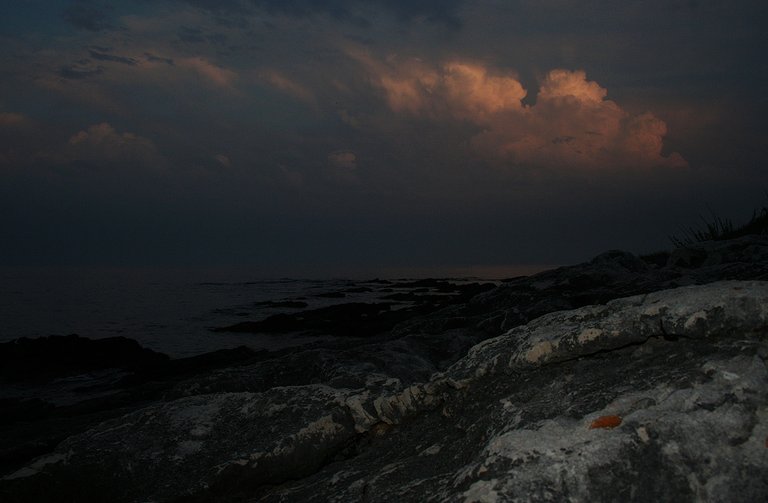
These photographs were taken more than a decade ago.
As you already learned from the title, the year was 2007.
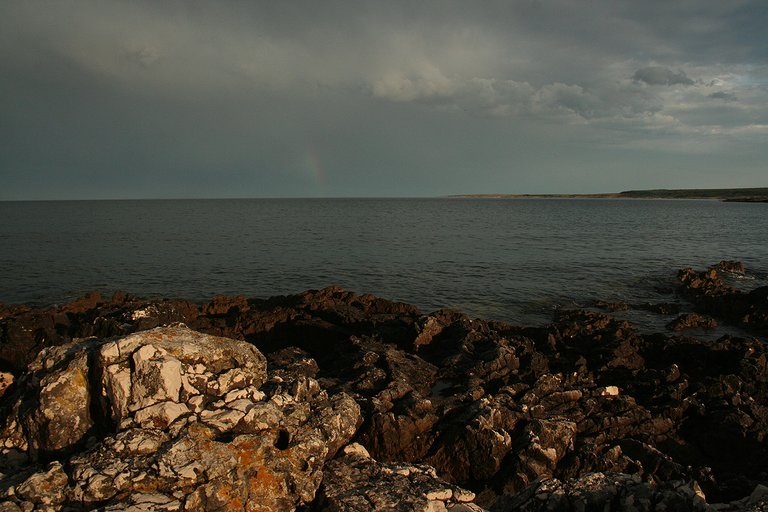
But unlike many other places on the southern coast of Istra, the stretch of shoreline shown here hasn't changed at all.
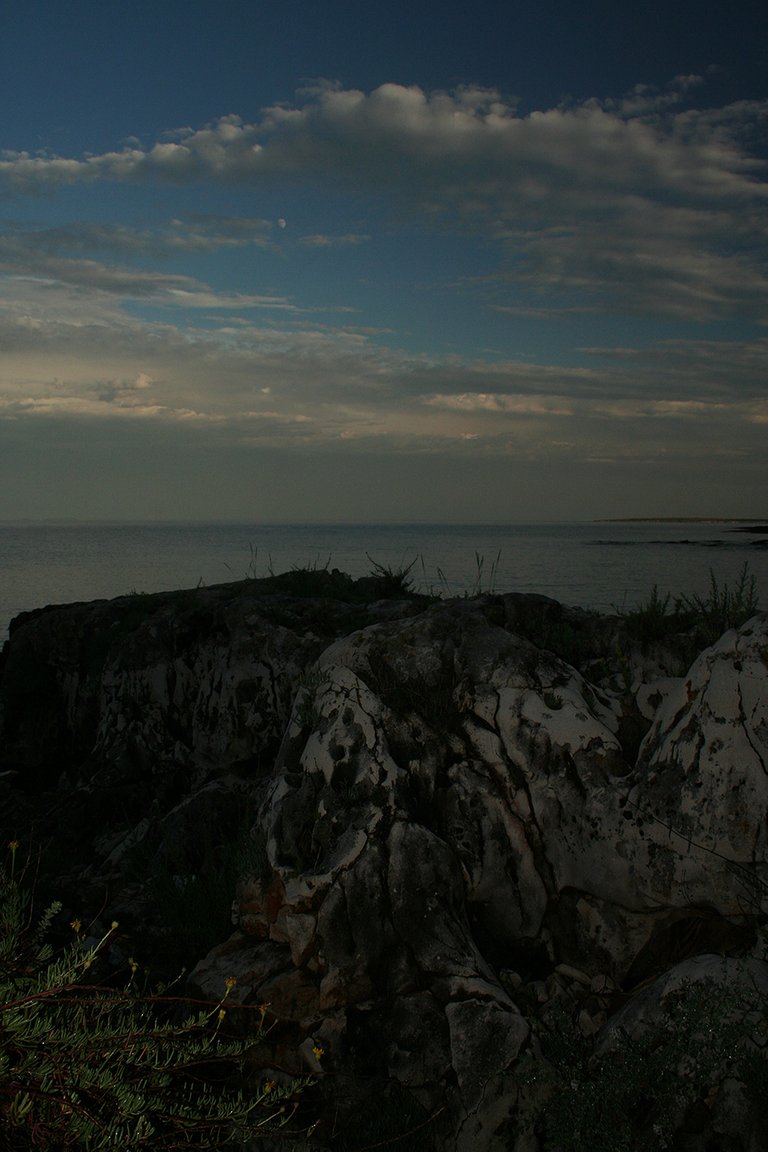
Had these shots been taken yesterday evening, they wouldn't look much different.

At one point, while I was observing the scenery on the evening of the 27th of June 2007 ...
... a small, colorful, fragment of rainbow appeared above the distant blue land across the Kvarner Gulf.
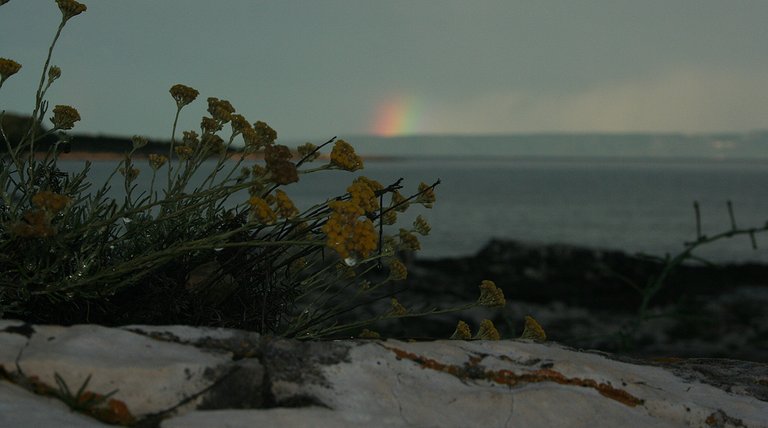
In the foreground of this shot, you can see the Helichrysum italicum plant that grew on the thin soil accumulated between the coastal rocks. Helichrysum italicum, commonly known as the curry plant or immortelle is edible and has a beautiful aroma, so I use it often as a spice. Sometimes, while walking by the sea, I just pick a few leaves and chew them along the way. They are very bitter, but in a way that pleases me. My neurotic, acid stomach reacts very well to that aromatic bitterness.
In this wider shot, you can see more of the scenery around the plant. The immortelle often forms dense growth that covers larger patches of the coastal terrain. In this case, the plant has formed what looks like a small island on the petrified sea, and that formation looked great in the photograph as a portrait of the species in its habitat. The rainbow was still in its place, enhancing the picture.
But the rainbow didn't last long, so this is the last time you'll see that colorful light in today's post.
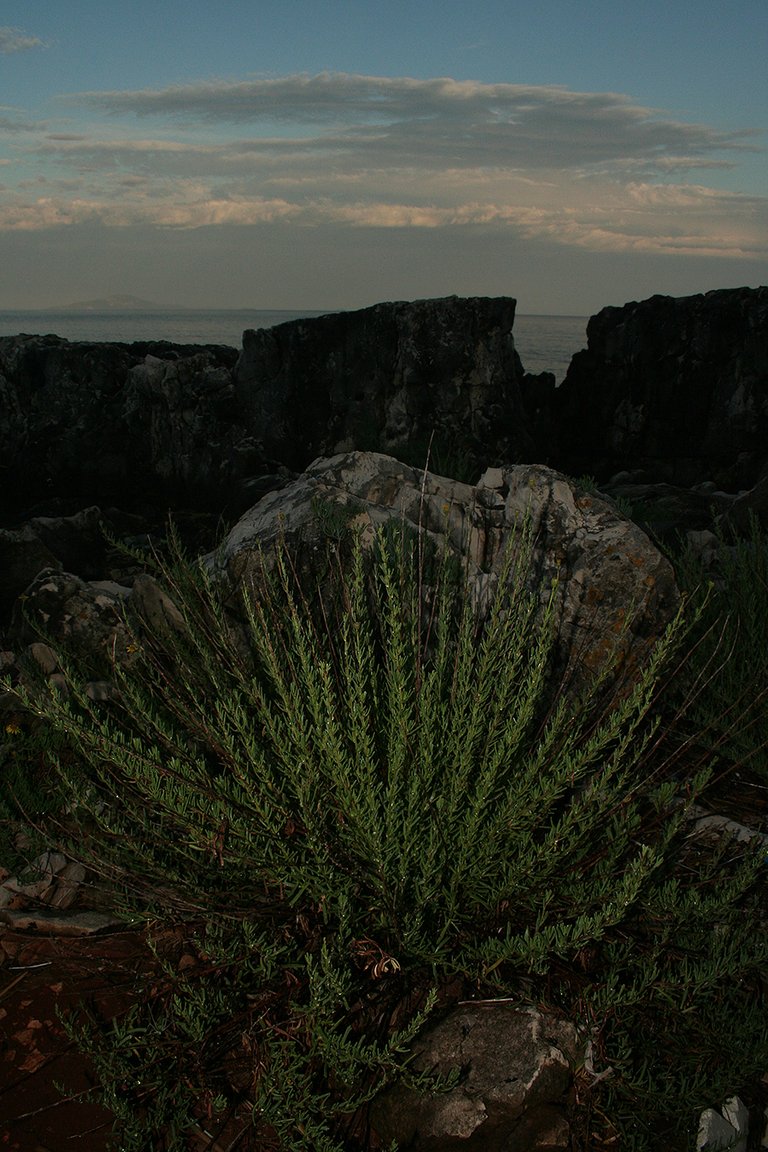
The main protagonist of this shot is another coastal plant that grows close to the intertidal zone. The Limbarda crithmoides ...
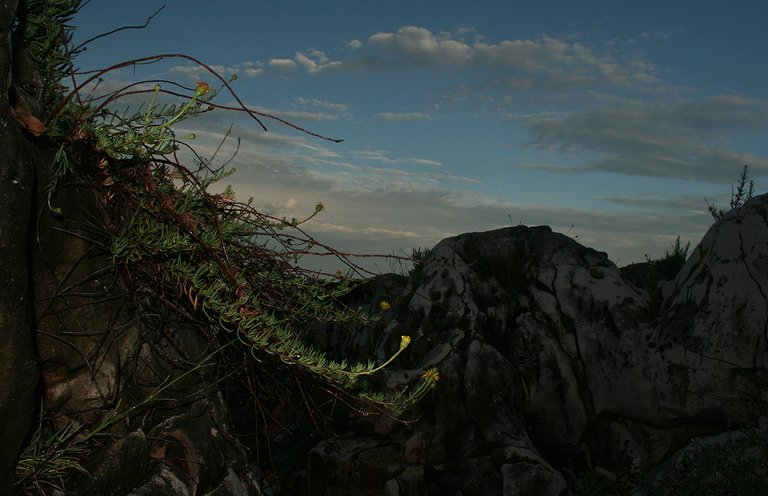
... commonly known as the golden samphire. In the following photograph ...
... you can take a slightly better, moderately more up-close look at its golden flowers. Especially if you enlarge the picture by clicking on it. I mean, the flowers are yellow. But, you know. Golden. Yellow. Let's pretend that they are the same. Or maybe they are the same. Are they? If you know, tell me, I find this topic pretty confusing.
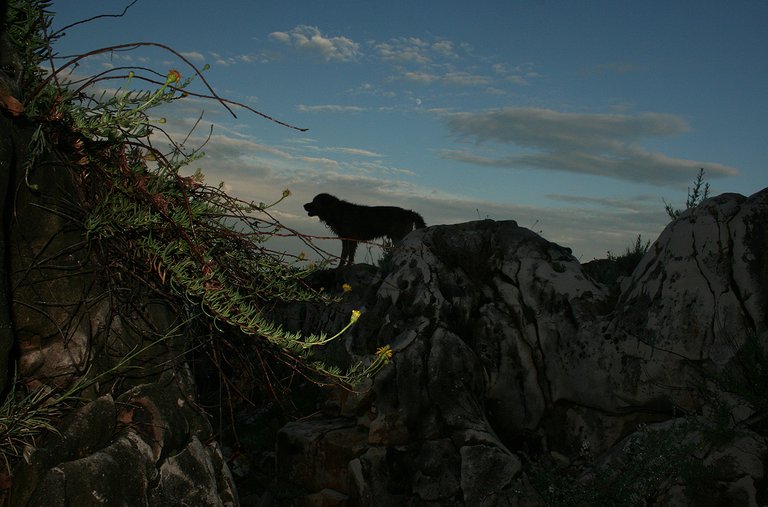
In this shot, my dog Pancho entered the scene. The young succulent leaves of the golden samphire are tasty, juicy, and edible, so I like to eat them cooked or raw.
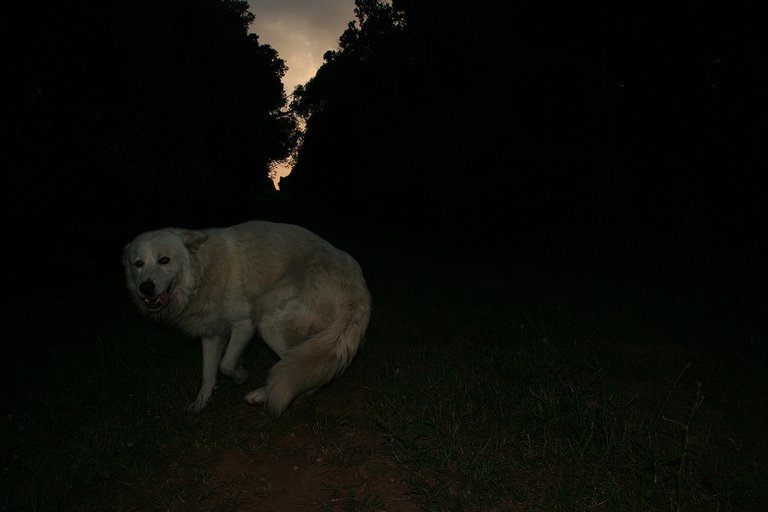
The white dog shown in this photograph is Pepi, Pancho's brother.
Here, Pepi is posing on the coastal rocks.

This is Pancho again. Searching for refreshment in the sea.
The sky that evening was dynamic and beautiful.
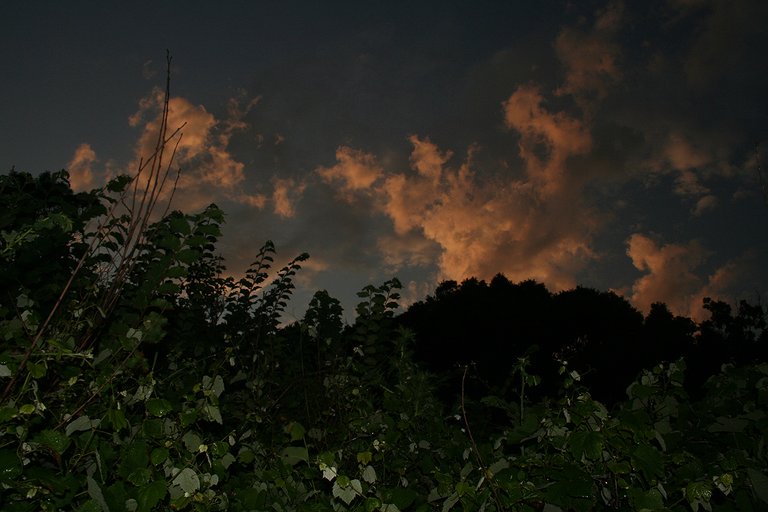
Things were constantly changing up there ...
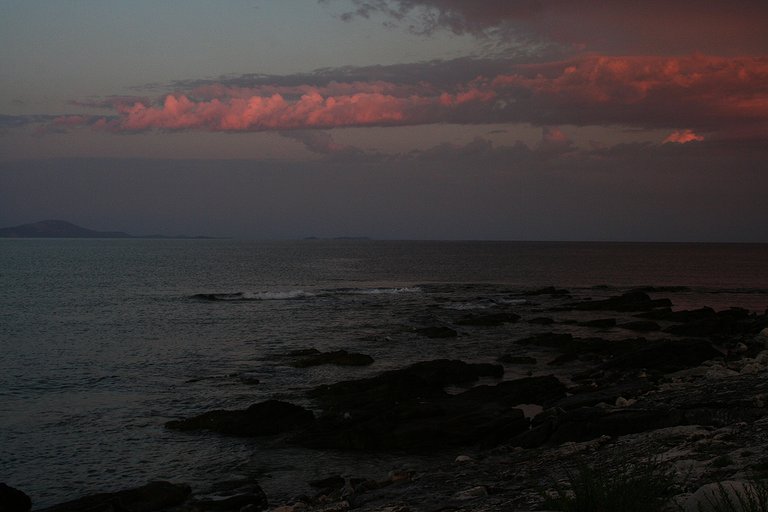
... and I was following those changes ...
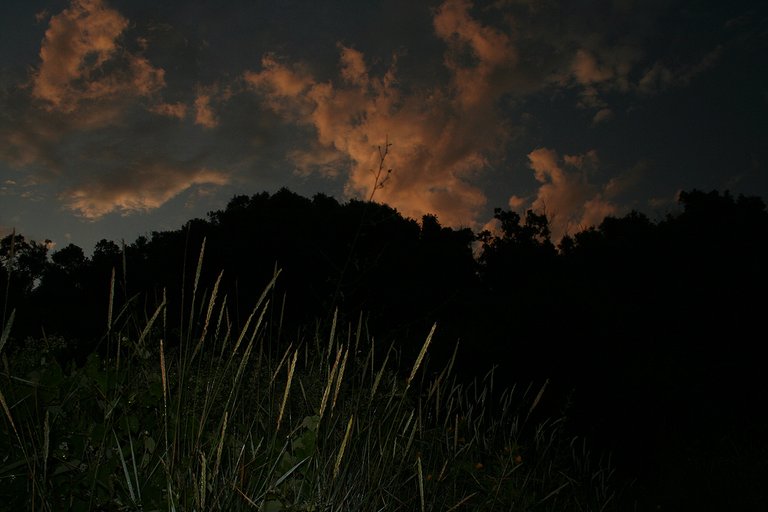
... through the lens of my camera.
I had a Canon EOS 350D camera back then. A Canon EOS 350D with the 18-55mm kit lens.
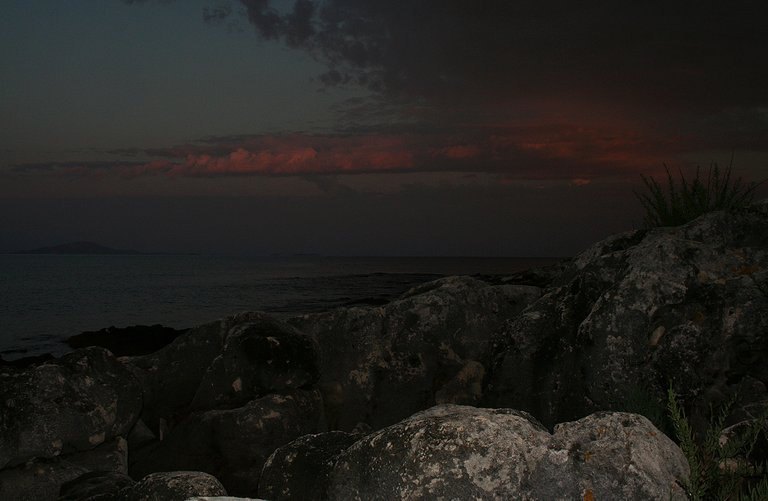
As the day was getting darker. I mean, as the night was slowly approaching ...
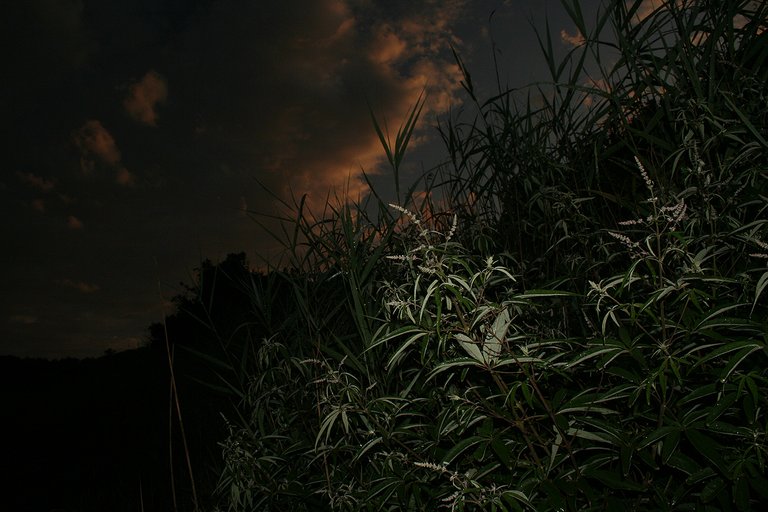
... I started using the flash built into the camera to illuminate the stuff in the foreground.
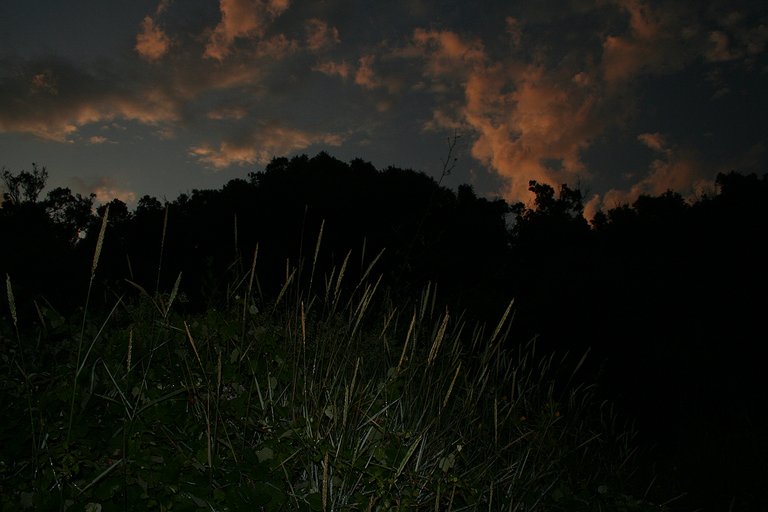
That gave a bit of depth ...
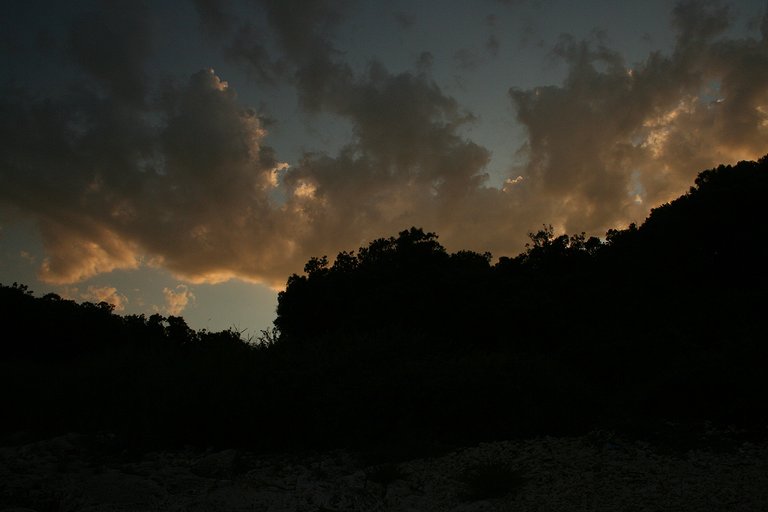
.... to the shots that will otherwise show only distant silhouettes. You can see that if you compare this and the previous photograph.
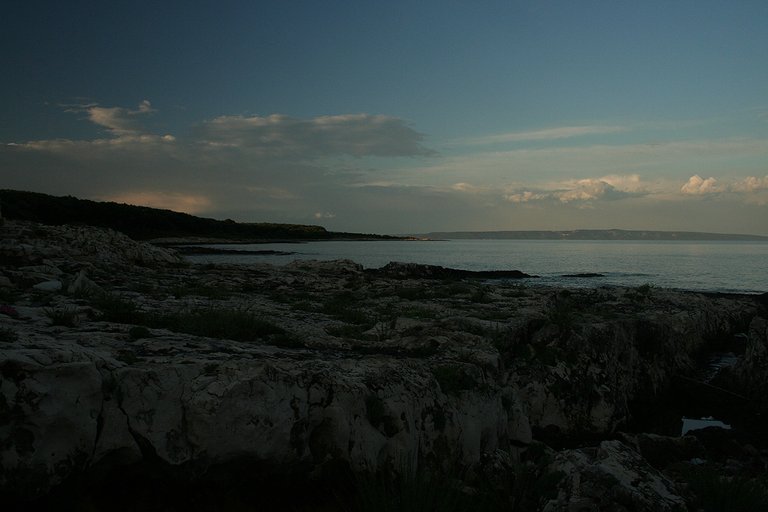
About fifteen minutes earlier, the flash didn't have that effect. This photograph was taken without it but in the following one ...
... the illuminated rocks in the foreground gave a different feel to the scene.
Do you remember when I said that the rainbow won't ve seen in the post again?
Well, I lied.
The rainbow just had its second coming in this and the previous two shots. But that's it. No rainbows from now on, believe it or not.
In some places along that stretch of coastline, you can see plenty of reed grass (Phragmites australis) just a couple of meters from the intertidal zone. Those places are humid and sheltered from the wind.
When the reed grass shown in this shot was photographed, the night was almost there.
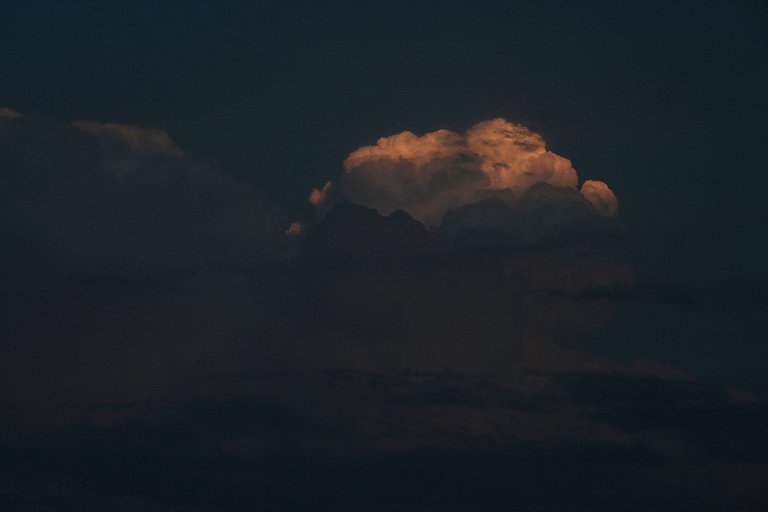
I photographed this cloud mainly because I liked its vividly illuminated crest that stood out from the rest of the sky shown in the shot. In the following photograph ...

... with the reeds and tall grass in the foreground, the brightly illuminated part of the same cloud is considerably smaller.
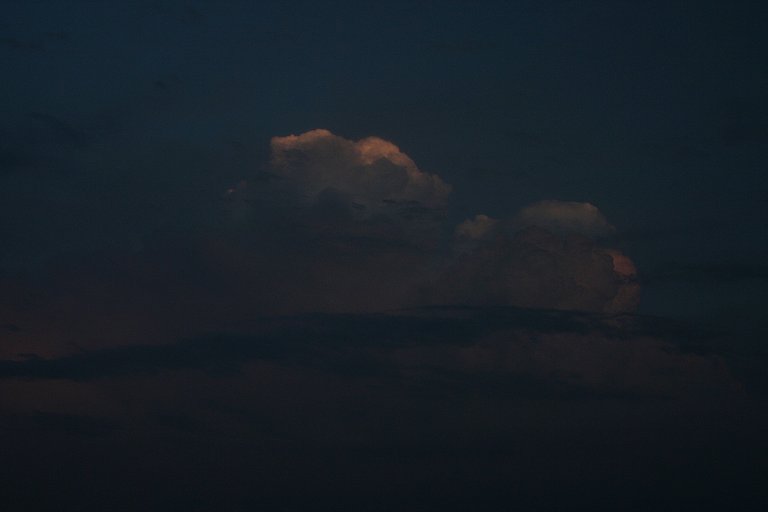
The cloud was almost completely darkened when this photograph was taken.
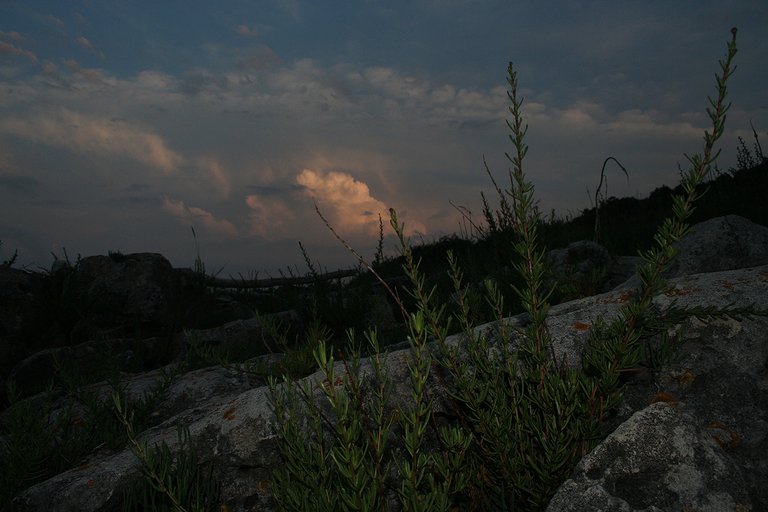
Do you remember the golden samphire? It was introduced earlier in the post. Well, you can see another portrait of that plant in the foreground of this shot.
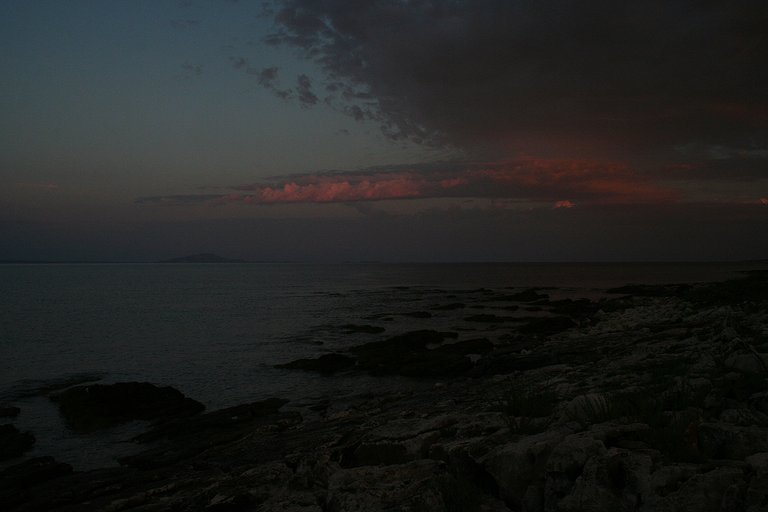
In this photograph, the main attraction is the elongated red cloud above the eastern horizon.
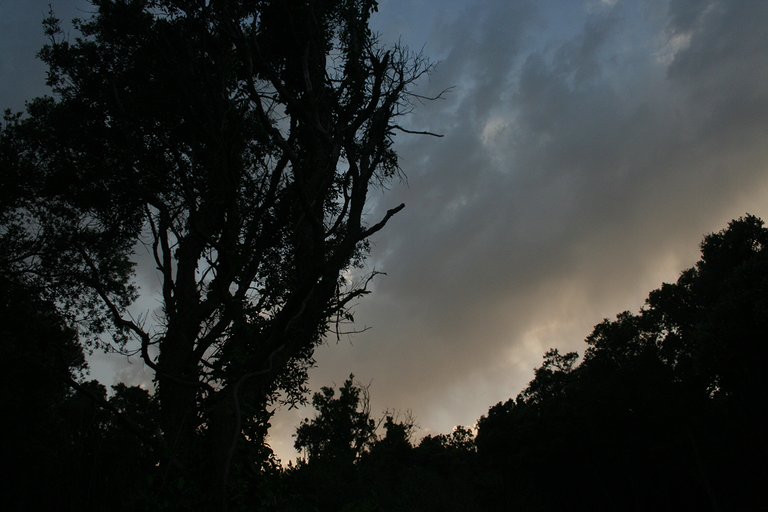
Here you can see the silhouettes of the trees and the sky above the western horizon.
This is my dog, Pepi. Again. Alone in the dark this time.
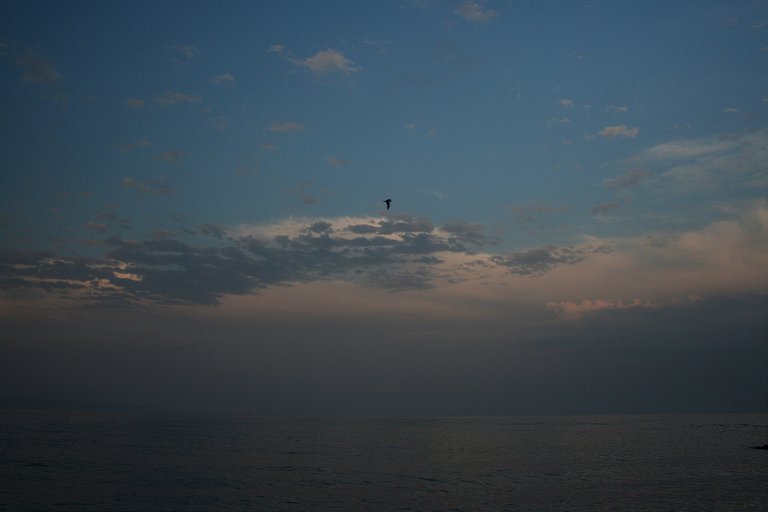
The small dark silhouette in the center of this shot is a seagull.
This is one of the first shots I took on that occasion. The atmosphere wasn't so crepuscular.
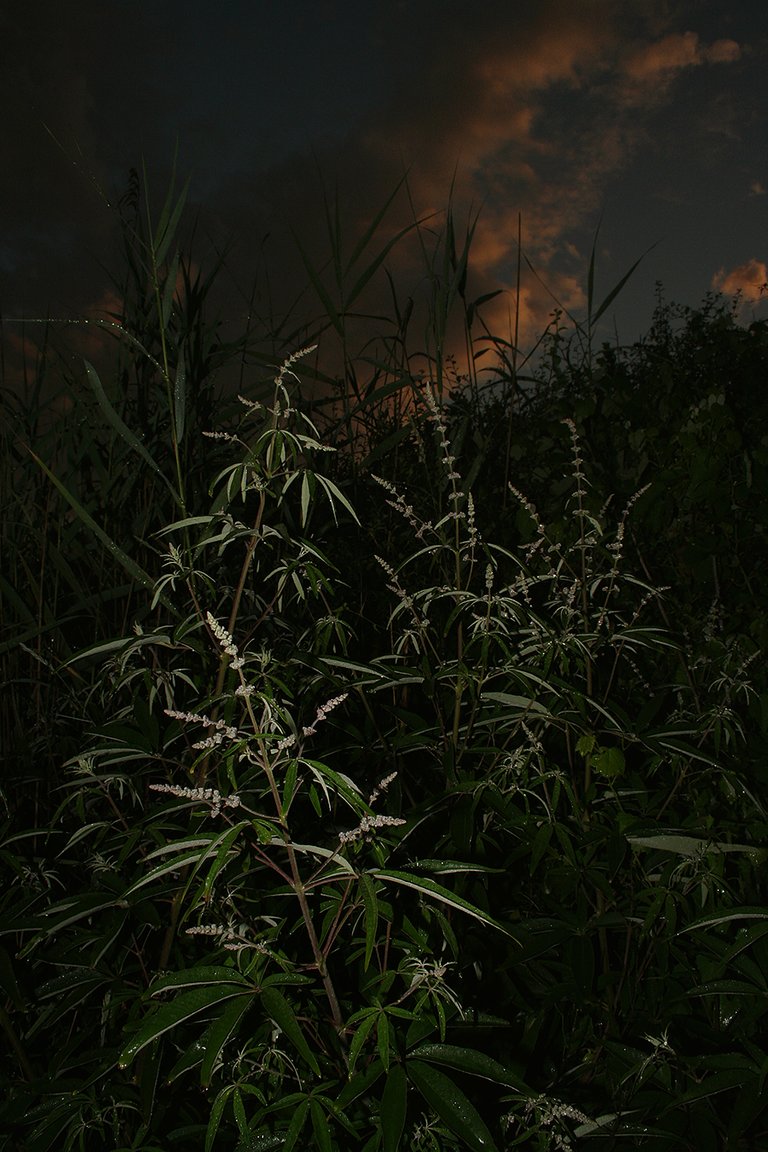
In the foreground of this vertical shot, you can see some pretty tall plants that I wasn't able to identify.
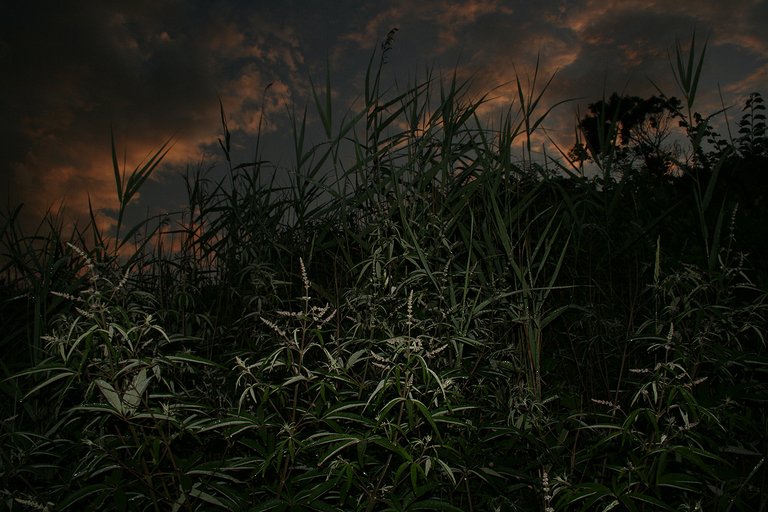
They were growing surrounded by reed grass.
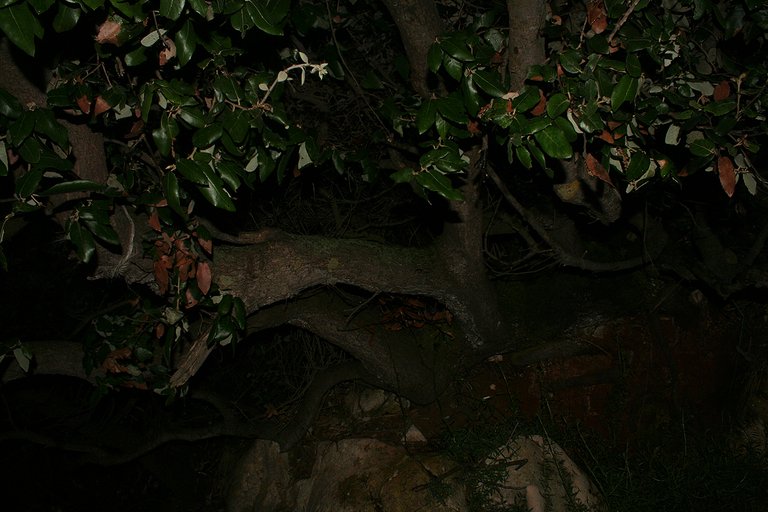
Here you can take a look at the evergreen oak (Quercus ilex) that grew very close to the sea, isolated from the many trees of the same kind that form the nearby forest. While the evergreen oaks in the forest are pretty tall and vertical, this one is pretty big but in a horizontal way. It looks like a large shrub or a group of shrubs. The shade that this tree provides on the beach is highly requested in summer making the entire inlet a very special place for the locals and tourists who have discovered this wild stretch of coastline with no hotels, asphalt roads, and similar infrastructure.
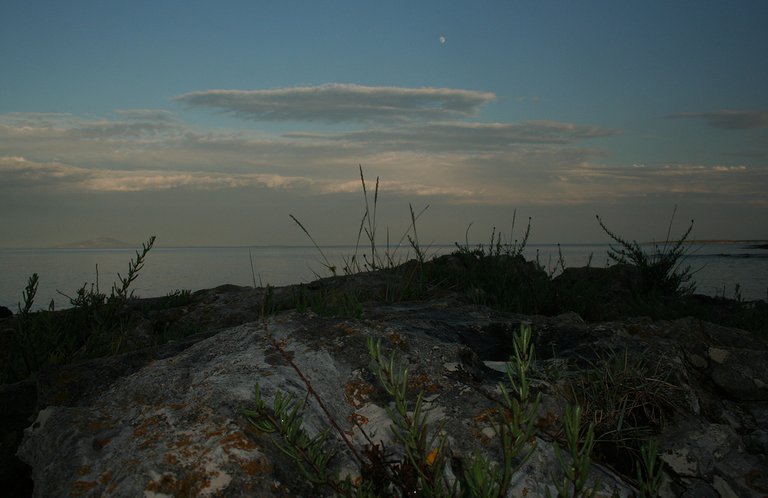
Here you can see various plants and lichens that grow on and between the coastal rocks.
And that's it. I mean, I have two more photographs to show, but ...
... but there is nothing else left to say.

